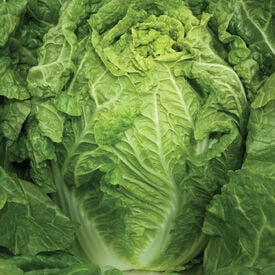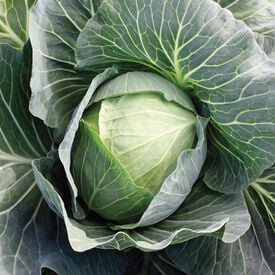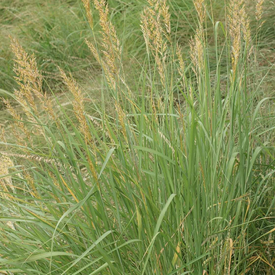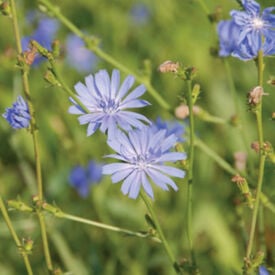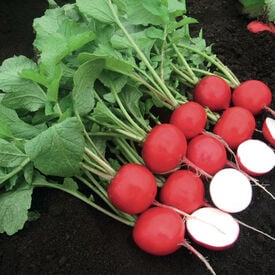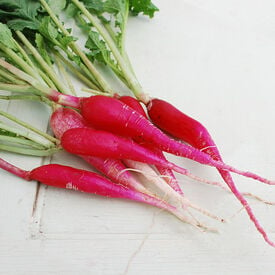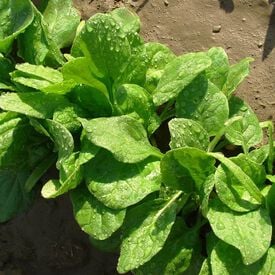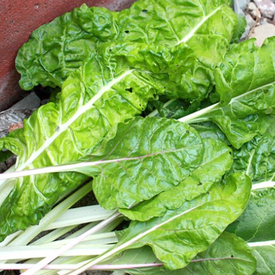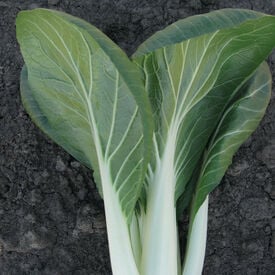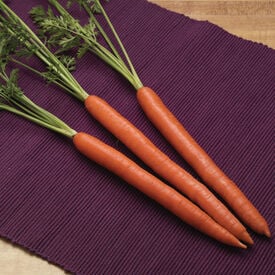Spring Raab broccoli, also known as rapini, has roots in Mediterranean cuisine, particularly in Italy, where it has been cultivated for centuries. This unique vegetable is characterized by its slender, green stalks topped with small yellow flowers and dark green leaves, which are edible and packed with nutrients. The flavor of Spring Raab is distinctively bitter and nutty, which softens with cooking, making it a versatile addition to dishes like stir-fries and pasta. Harvesting typically occurs 40-60 days after planting, ideally before the flowers fully open for optimal taste. This cool-season crop thrives in well-drained soil and prefers cooler temperatures, making it perfect for early spring or fall planting. Its rapid growth and ability to produce multiple harvests make Spring Raab a favorite among gardeners, while its rich vitamin content adds to its appeal for health-conscious cooks.
Feng Qing Choi cabbage is a slow bolting Mei Qing Choi type with good plant size and dark leaf color. This variety has excellent holding ability and uniformity.
China Gold (F1) cabbage has exceptional color both inside and out. It has a compact frame, good weight and is very slow bolting.
SuperStar is a hybrid cabbage that produces the highest quality fresh market cabbages. It has excellent wrappers for a fancy pack along with excellent holding ability in the field and after harvest.
The Indiangrass is a warm-season bunchgrass that is native to central and eastern North America and provides cover and food for wildlife. This grass can reach up to seven feet tall and is a common species of the Tallgrass Prairie. The beautiful, plume-like seed heads are very ornamental making them excellent for prairie and conservation mixtures.
Chicory has a long taproot that penetrates subsoils which makes it drought tolerant and allows it to make minerals more available to livestock. Rich in potassium, sulfur, calcium, zinc, sodium, manganese and iron. When managed properly, Chicory produces leafy growth which is higher in nutritive and mineral content than alfalfa and other cool season grasses. Used mainly in mixes with other pasture or cover crop seeds. Chicory (Cichorium intybus L.) - Warm season, broadleaf - Perennial - Upright and spreading growth habit - Protein levels: 10-32% - Forms arbuscular mycorrhizal associations Uses: - Bees & Beneficial Insects - Chicken Forage - Deer Attractant - Forage
Interior texture is smooth and dense with bright white color, even when roots get large. Exceptional quality and taste when picked young, but still tasty if allowed to sit in the garden longer, giving gardener an extended harvest opportunity.
The Cincinnati Market Radish is a uniquely skinny and elongated pink to red radish that is a fresh-from-the-garden-favorite! This six inch variety has a delicately mild taste with a very tender and crisp texture, making it perfect for fresh eating. The early maturing radish has been an heirloom garden favorite since 1885. You can enjoy the delicious Cincinnati Market from spring to fall.
The Viroflay Spinach is a gourmet French heirloom that was developed prior to 1866. The big, smooth leaves of this Spinach variety is a deep green color and grows up to 10 inches long. This very fast growing plant is popular for fall planting.
The Lucullus Swiss Chard produces highly nutritious leaves from early spring until the first hard freeze in the fall. This variety produces great during the summer heat. This chard is a very popular variety grown throughout the United States.
This pak choi's tender leaves and crisp sweet stalks are a tasty addition to recipes or eaten raw. Swap stalks for celery sticks, add to soups and stews, or grill on the barbecue. Plant every couple of weeks for successive harvests in spring and fall; Bopak retains it’s nice flavor even in warmer weather.
Triton F1 is well known for its superb taste and texture. This carrot has strong tops that are erect and dark green in color. Its roots are nine to ten inches long and .5-1 inch in diameter. This carrot is medium-orange and quite cylindrical in shape with a semi-blunt tip.


